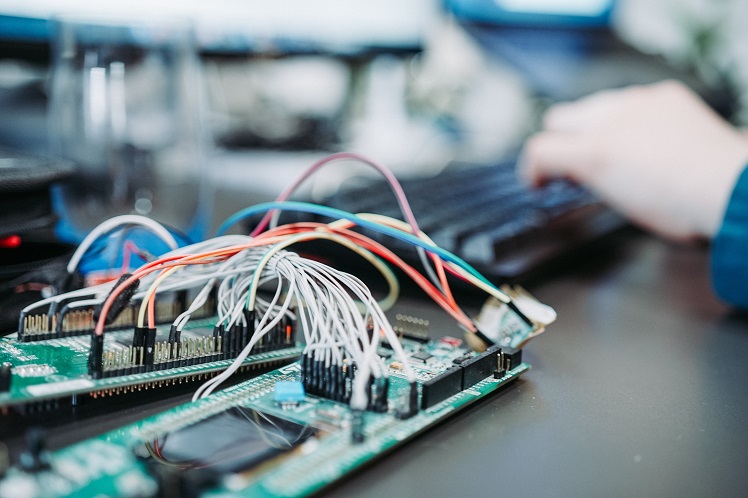views

By 2021, we could have as many as 50 billion connected devices. While a few years ago this would have been a cause for celebration, many people think it’s a cause for alarm.
The Internet of Things (IoT) is a relatively new concept that’s impacting us in new ways every day. The term itself refers to the interconnectivity of our devices which are becoming smarter than ever before. Devices are able to collect information, receive information, and act on this information.
As you can imagine, the development of the IoT is a big area of research, but it’s not without its challenges. By 2021, we could have as many as 50 billion connected devices. While a few years ago this would have been a cause for celebration, many people think it’s a cause for alarm.
What’s the main problem here? While most consumers have a few connected devices, perhaps a smartphone, smart TV, or even a Google Assistant, this number is expected to just grow and grow. Soon, consumers might have over a hundred household devices that are bundled into the IoT.
The problem arises when connectivity is no longer optional, and people might feel uncomfortable with the way their data is being harvested by companies. In this guide, we’ll explore the biggest challenges that face IoT in 2020 so you can decide for yourself how businesses should continue moving forward.

1. Stronger AI Attacks
Attacks against the IoT are far from new. Cyber attackers today are stronger than ever. What happens if they can take control of unsecured connected devices to target DNS providers and tech companies? What if they steal user information?
While these things might sound far-fetched, they’ve actually already happened. In 2016, the Mirai botnet took control of many unsecured connected devices, bringing the internet to a bit of a standstill. This is just one example of what can happen when unsecured devices are attacked, but it hasn’t stopped here.
Attacks are becoming more sophisticated and multi-stage. They’re more advanced, and as we see the IoT spread to new industries, it only becomes more important to protect this information.
2. Cloud Attacks
Speaking of cyberattacks, what happens to all of that data stored in the cloud? Cloud providers will likely become one of the new targets moving forward. Cybercrime is simply expanding too rapidly. There aren’t enough resources to strengthen cloud security yet.
With massive amounts of data being stored in the cloud in real-time, this could be catastrophic if it’s not handled quickly. Recent studies show just how powerful this type of attack would be. A takedown of one of the country’s top three cloud service providers for at least 3 days could lead to losses of over $1.4 billion for the retail and wholesale industry alone. That’s only a single example of how widespread and expensive this type of breach could be.
3. Consumer Perception
Believe it or not, one of the biggest problems with the IoT is consumer perception. Consumers simply don’t trust the security of their devices. With breaches from big-name companies and recent scandals with social media platforms, it’s unlikely the industry will be able to reclaim this confidence any time soon.
In the State of IoT Security Report from 2018, a reported 65% of consumers are worried about a hacker controlling their device or data being leaked. As we learned from the two points above, these aren’t unfounded concerns.
The reality is that many users simply don’t understand how their devices stay so connected, and they don’t always understand exactly how their data is being used. It’s up to businesses to communicate more effectively and focus on developing their security protocols if they want to gain consumer support.

4. Lack of Logging
Logging is how data companies, software, and tech devices keep track of their real-time status. Things can go wrong quickly in the digital world. When problems do happen, they’re difficult to diagnose and take time to recover from.
As we saw with the statistics above, time is of the essence when billions of dollars are at stake. There needs to be a push for more application logging and monitoring, particularly with logging as a service. A Papertrail product is attempting to focus on this area, so it’s a sign that we’re moving in the right direction.
5. Limitations of AI
Finally, there are limitations to the power of AI or artificial intelligence. There tends to be a focus on all of the amazing benefits of AI, but there’s still the fact that AI is still not ready to handle large amounts of information. AI has limits. While these tools can identify associations in large volumes of data, they still are no match on human understanding.
With Smart IoT, we need smarter AI that can fight security challenges and solve problems. As of right now, that doesn’t exist. Hopefully, it’s the next big thing on the horizon.
The Future of the Internet of Things
While it’s true there are many problems with the IoT, it’s also true that this is a relatively new technology. It’s just reaching its adolescent years, so it’s not a surprise that developers have a long list of problems to solve before moving forward.
What we do know is that connectivity is a major part of modern life. It’s here to stay, whether consumers want it to or not. Only time will tell how we’re able to fight back against cyberattacks, and also how consumers will react to the rise of the IoT. If we’re lucky, this technology will evolve rapidly, fitting seamlessly into our lives in new ways.
If you are looking for chatbot & mobile app development solutions, Drop us a line at enteprise@affle.com












